Branding your startup through the lens of storytelling
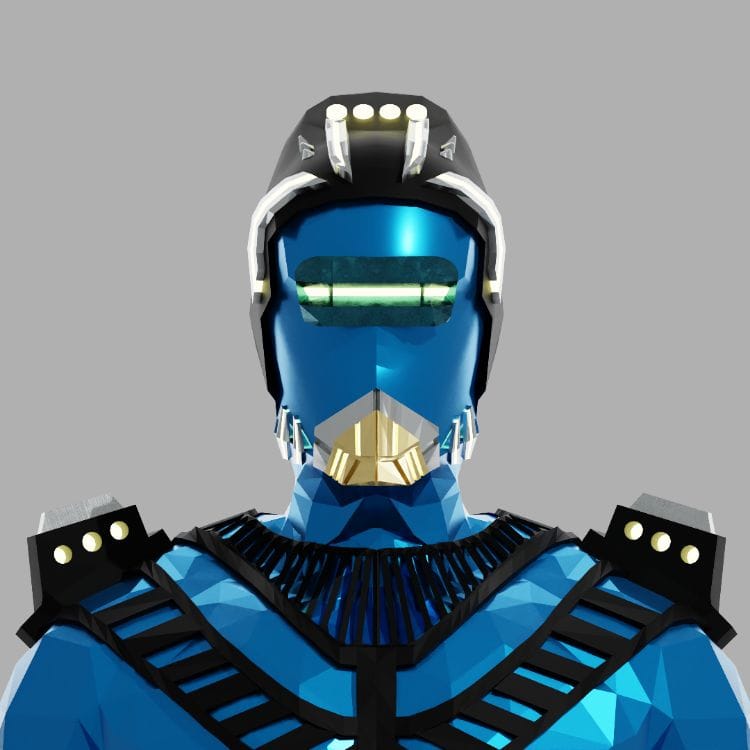 Victor Ugochukwu
Victor Ugochukwu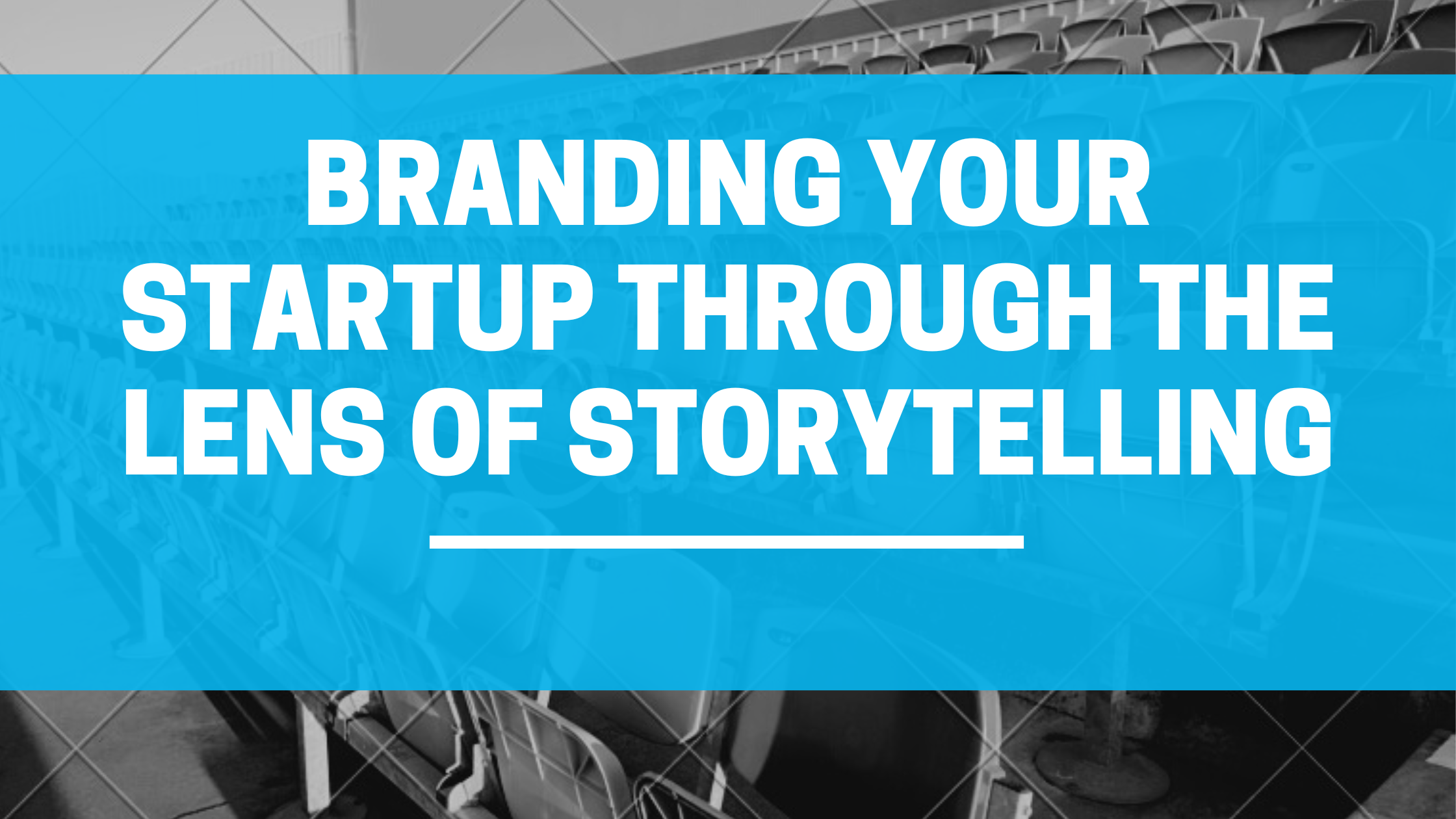
What do the top successful brands in the world have in common? They tell stories. Apple does it. Coca-Cola is great at it. Disney lives it. Branding transcends your logo, colour palette, content tonality and taglines. It's all about the stories you share, deeply rooted in your brand commitments, such as your vision, mission, history, values and culture. These are stories that your users resonate with and identify with. Brand storytelling has little to do with your brand or product and is about your users as the main character in the narrative. Compelling brand storytellers paint pictures of people, events, places, and experiences that connect audiences to a brand's values. Nike does this without force-feeding anyone a direct narrative about their company, product, or offer. Instead, as a brand, you get to tell stories about how people's lives are impacted by what you do. Share dreams for the future. Reminisce over shared histories. However, most companies and businesses struggle with getting their brand stories right and using them to drive successful campaigns and differentiate themselves in a competitive market.
Why is it difficult to get right?
It's not just about telling stories; brands must be sure they are telling stories their target audience cares about. For instance, Airbnb recognised that their audience doesn't want to hear about the incredible technology or filters that help them find lovely places to stay. Instead, they want to listen to stories about the experience of visiting somewhere new. They want to know about the people, the homes, the countries, and the backgrounds Airbnb's brand makes possible. Realising that no one can tell these stories better than the hosts and travellers, Airbnb dedicated a section on their website that gives their target audience an inside look at the lives of their hosts across the world. Even more, than knowing what stories to tell, the approach, methodology and other storytelling elements, such as metaphors, frameworks, characters, themes etc., are all essential puzzle pieces needed in leveraging storytelling to set your brand apart and stand out. Brand storytelling is human and relatable and builds trust by putting people first. This is what you get by telling stories your audience cares about. From marketing campaigns to everyday engagement on social media; to customer service for an unforgettable customer experience; every act of employees and company executives or representatives in public; every piece of content; every engagement must tell a resonating story. Let your brand story be holistically thought out and implemented. So how do you activate and sustain compelling brand storytelling? This is what this piece is about.
Storytelling is an attitude
Here's the short answer. Storytelling is not just about narrating a series of events; it's an attitude! It's a way of thinking that allows brands to connect on a deeper level with their audience and to communicate complex ideas in a relatable, engaging, and actionable way. Like archaeologists, it's about finding the human element in technology and using that to connect with people on an emotional level. You discover and unearth what is already there. This is why good storytelling abilities are crucial in today's tech-driven industries. It's not enough to list the features and benefits of your software; you must be able to communicate it well, i.e. message - market fit.
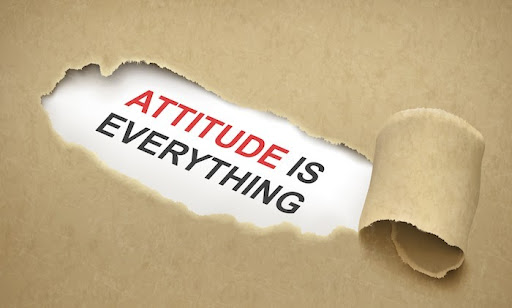
Web3 and the decentralised tech it is built on, for example, is still a relatively new concept for many people. Therefore, for a brand in the web3 space to build trust and engagement with the audience or community, there must be a great story. One thing that makes Ethereum such a robust ecosystem today is what is called "The Social Layer". Ethereum's social layer embodies the entire ecosystem's spirit—a community focused on achieving one single goal, building a fully decentralised internet of value. This single mission is encapsulated in the culture and values of the Ethereum community. This storytelling template can be modelled and tweaked by web3 brands to build a strong community/user base. Don't just focus on the technical aspects of your project; focus on the human element.
The power of Metaphors
Great storytelling achieves three things: clear communication, emotional connection and coherence in identity. But a brand's ability to deploy and leverage storytelling elements such as metaphors determines how well these are achieved.
You see and hear it daily, but maybe you've not thought about it. Well, let me bring your attention to it;
The "Belong Anywhere" metaphor. Airbnb uses this phrase to communicate its unique brand promise of making travel accessible and comfortable for everyone. This simple and concise phrase is powerful because it clearly articulates the idea of being at home anywhere in the world.
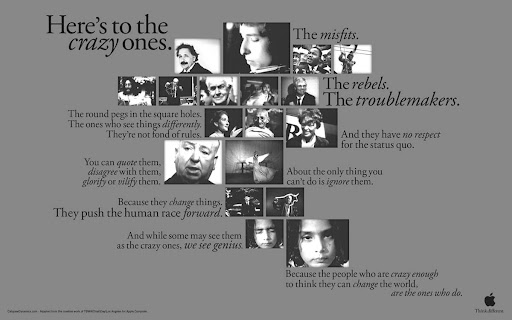
Apple's "Here's to the crazy ones". This powerful line was used in 1997 Apple's iconic "Think Different" ad campaign. The metaphor "the crazy ones" paints a vivid picture of what the brand represents in the minds of its audience—the non-obvious and innovative spirit of Apple. But more importantly, it conveys Apple’s message of individuality and creativity in a simple yet powerful and memorable way.
What are these brands doing??
Using metaphors to make complex or abstract ideas more accessible, tap into the emotions of their audience, and emphasise a point of difference in the minds of consumers. Metaphors give brands the key to unlocking compelling brand narratives. The beauty is that metaphors don't only create an emotional connection with the audience, it propels mental availability for brands employing them in narrative building. This makes them an excellent differentiator tool for brands looking to stand out in a sea of competition. Leveraging metaphors in brand storytelling helps brands to build a consistent and coherent identity by tying all of a brand’s communication and marketing materials together under a single, unified theme.
Storytelling is not just about crafting a compelling narrative. It's about empathising with your audience, speaking to their pain points, and inspiring them to take action. Moreso, it is essential to remember that storytelling is an ongoing process. Brands must embrace it as an attitude and let it guide their communication and marketing efforts.
A great story is key to getting your internal leadership right

The greatest empires: corporate entities or nations were built not just on technology but by the creative effort shaped by common goals (story) shared by many people. I've worked with myriad startups in the SaaS space, and I can say this for sure: I feel compelled to put in more than necessary for an organisation that blends its culture with great storytelling. One extraordinary power of a good story is the ability to inspire, motivate and engage people. When people believe in a compelling story, they are more likely to be involved and committed to a company's mission. This is especially crucial in leadership. Leaders within companies or any organisation are responsible for setting the company's tone and direction. Creating a strong company culture is essential in helping bond people with a standard set of behaviours, beliefs, and values. When done right, this can result in loyal, motivated, and purpose-filled employees.
However, building the right culture is easier said than done. This is because every company would likely consist of individuals with different views and ideologies. It makes it difficult to get them to see things from the same lens. As a way around this, project leaders rely on data. After all, it is difficult to argue with facts and figures. The problem is that figures and facts alone won’t inspire, engage, or convince people. Without stories, it isn't easy to turn dry data into action and motivation. In the words of Jeff Bezos;
“You can have the best technology, you can have the best business model, but if the storytelling isn’t amazing, it won’t matter. Nobody will watch.”
A great story helps create an organisation's shared understanding and vision. It should be authentic and genuine. It should reflect the values and culture of the organisation living beyond papers and wall canvas. By aligning everyone within a company around a common narrative, making decisions consistent with the company's values and goals becomes much easier. Using storytelling as a leadership tool allows founders and project leaders to develop a deeper connection with employees and lead more effectively.
Brand identity or technology?
Strong branding is a better moat than technology, especially in B2C businesses, because it can keep customers loyal even with an imperfect product. Branding encompasses the overall touchpoints of an entity to its stakeholders—customers, investors, partners, regulators, and more. Great brands create emotional connections with these parties through their brand stories. Brand differentiation is critical, primarily if you can't compete technologically with established companies in your sector. A strong brand differentiates you from your competitors and creates an emotional connection with your consumers. This connection goes beyond the functional benefits of the technology and is built through consistent messaging, storytelling, and emotional appeals. A well-crafted brand narrative cuts through the clutter and establishes a unique identity for the product, making it more appealing and memorable to consumers. Savvy B2C executives know this and do everything to make their branding emphasise their points of difference.
Leveraging controversy in brand storytelling
I have worked with several SaaS startups and noticed that many of these companies tend to shy away from controversy in their marketing efforts. Phrases like "No, don't release that Op-Ed", "They are one of our investors", and "We are currently courting them for a partnership" are often used as reasons to avoid taking a stand on controversial issues. But they are missing the point. Like a wise man would say, "don't let a good controversy go to waste". I believe combining controversy and brand storytelling can be a powerful tool for generating attention and engagement that could result in a positive outcome for a company and not just be dismissed as a Molotov Cocktail. While assessing the risk of taking such moves is essential, it is also an opportunity to spark a conversation around an issue relevant to your brand and its audience. And by taking a stance on a controversial issue that aligns with your BRAND VALUES, you can create a story that resonates with your audience and positions your brand as a thought leader.
But sadly, many SaaS companies shy away from this opportunity when it arises, often because they have a morgue and not just a skeleton in their cupboard. Hence, those who live in glass houses shouldn't throw stones. They're afraid of being called out and fed a dose of their medicine. If your closets are clean, you can amass brand collateral by mixing controversy with your brand storytelling efforts. Dare to be different! Embrace chaos! Swim against the tide sometimes and reinforce your value perception among your audience.
Don't create content; tell stories

The famous saying, "Content is king", is true. But it is missing one vital nuance. It's not just any content. Storytelling is the true king, and innovative brands know this. Take the web3 space, for example. Many brands in web3 are making some exciting plays. Web3 infrastructure company Moonpay acquired the creative agency, Nightshift. Then there is the NFT project, Doodles, which has acquired the 'Rick and Morty' creator, Golden Wolf. What do these two acquisitions have in common? Storytelling!
Brands in the web3 space recognise that the only means to convey brand values is by creating remarkable experiences through compelling storytelling. For Moonpay, acquiring Nightshift is telling. As the infrastructure layer for most web3 brands looking to key into fiat on and off ramps. It is well-positioned to serve the critical need of consumers fiddling with crypto and blockchain protocols. But it is not enough to act as a gateway. It needed something to create a lasting impression on the minds of consumers. And what better way to do this than through storytelling? With Nightshift, MoonPay can leverage the NFT sector to tell unique stories and cement its market position.
Infrastructure layer + storytelling layer = cementing market leader position.
This is akin to what Disney did with the acquisition of Pixar back then. Disney, like Moonpay, had a robust infrastructure, with a wide range of media properties and an extensive distribution network. However, they needed to gain the storytelling expertise that Pixar brought to the table with their animation studio and creative talent. Some principles are universal whether you run a fashion brand, a technology company or a financial services firm. Your customers need to be aware of you, but after awareness comes to trust, which moves them to the next level—aspiring to be part of your offering. Brands that want to play the global game need to become storytellers. It's the same reason Doodles acquired Golden Wolf or why fintech solution Robinhood has quickly morphed its daily newsletter "Snacks" into a media firm. Storytelling! Marketing teams need to be adept at storytelling. They need to understand that consumers care little about the product. That’s only WHAT. They want first to understand the WHY: the PURPOSE, the REASON, the STORY of WHY the product exists. By communicating the WHY, you tell your customers the simple story behind often complex solutions.
Story informs, inspires and entertains. Story ultimately shapes the consumer’s experience with a brand. If your community values the story, product sales come along for the ride. Brands that recognise the power of brand storytelling and leverage heavily have the long-term outlook locked in.
Don't be afraid to reveal your secrets
In today's competitive business landscape, the fear of revealing trade secrets can often hold entrepreneurs and industry leaders back from sharing their unique knowledge and insights. But here’s the kicker: As many successful business leaders have discovered, the actual value lies not in the idea itself but in the ability to execute it effectively. In a world where information is abundant, the unique insights and practical takeaways emphasise your point of difference.
Enter the power of storytelling!
The Dropbox team provides a behind-the-scenes look at their product development process and offers practical tips and best practices for building successful products. Even Apple, known for its secretive approach, has been known to give audiences a glimpse into its process. True value is not in sharing what you know but in the ability to execute it effectively. Your trade secrets and ideas are just one part of the puzzle. The real value lies in your ability to educate and provide practical guidance to your audience through storytelling. Whether through a detailed step-by-step guide, a series of templates, or a hands-on workshop, the goal is to make it as easy as possible for your audience to start seeing results.
Facts tell stories sell
Let's talk about branding in web3 for a minute. When it comes to engaging with users and building a loyal following, one area web3 is notably lacking in is storytelling. What you often see with the typical web3 product/protocol is the use of catchy copies like "Swap, earn, borrow and build" or "Financial freedom with no volatility" to emphasise the value a protocol offers. Others list the technical features of their platform, such as multi-signature wallets and on-chain settlement. But what do these mean to the users?
To truly captivate the audience, a protocol could share the story of users who used their platform to secure their retirement savings from the volatile stock market and gain peace of mind in their golden years. Similarly, rather than emphasising facts about their transparent and fair game mechanics, a web3 gaming platform could focus on sharing stories of how gamers are turning their hobbies into profitable careers by creating and trading unique in-game assets. Not only does this showcase the platform's benefits, but it also appeals to the emotional needs or entrepreneurial spirit of the target customer. You may be thinking, "But what about the facts? Don't they play a crucial role in building credibility and trust?" Of course, they do, but facts alone cannot create the emotional connection necessary to captivate your audience. We've all heard facts and statistics thrown at us countless times, but how often do they stick with us and leave a lasting impact?
For many users of web3, the concepts of blockchain, smart contracts, and NFTs can be overwhelming and challenging to understand. But by incorporating storytelling into your marketing efforts, you can make these complex ideas accessible and meaningful to a broader audience. Yes, facts are essential, but stories can transport us to another world, evoke emotions, and make a message memorable. Hence, to scale the impact of your marketing efforts, it is crucial to find a way to balance technical facts with personal and emotional stories. Facts provide the backbone of credibility and trust, but the stories bring the technology to life and make it relatable to customers.
Storytelling - the way to scaling adoption in web3
There's this general notion that what web3 needs to scale adoption is some killer applications. But I disagree. At this stage in the web3 growth cycle, developer acquisition is higher than user acquisition. This means acquiring and retaining developers who can build and improve decentralised applications and infrastructure is more critical than acquiring and retaining users of these applications. In other words, web3 is not ready for mass adoption yet. This isn't surprising, seeing as adoption is directly correlated to usage. But, to use, we have to first build. The application layer of the web3 internet is nascent. So we need manpower to build out these utility applications. But then again, Linux is not ready for mass adoption, but everyone uses it (directly or indirectly). Web3 doesn't have to be prepared because user acquisition can flip developer acquisition through Storytelling.
Users will use an imperfect product if they believe it offers a better alternative. This is the principle behind product market fit. But how would they even believe without a strong story propelling the "imperfect" product? Many blue-chip projects or thriving ecosystems in web3 are far from completion. Yet there is traction. Bitcoin's lightning network is not there yet. Ethereum still has to go through Surge, Verge, Purge, Splurge, and Scourge. Polygon, Arbitrum, Optimism and many L2s may have a ZK future ahead of them. With the correct narrative, even the most imperfect projects can thrive. It just needs to be on the right track.
The problem is not the tech. Instead, web3 needs emotional appeal to succeed
Another common argument often put forward to make a case for scaling web3 adoption is that, to attain mass adoption, web3 solutions need to be more like web2 and abstract away technical complexities.
Of course, I agree that product layering on the web3 stack could be designed to fit into existing web2 habits. But that alone is not where the success lies. That would be equivalent to depending only on technical capabilities. It requires more. Web3 represents a CULTURAL SHIFT in our thoughts about the internet and our relationship with technology. It's a move towards decentralization and empowerment, but many people are not yet ready. People are still unfamiliar with what empowerment is. So why should they even care? The WHY is what is largely missing. We need to double down on communicating the values and cultural norms of web3 to the mainstream public. And by this, I don't mean selfishly creating another piece of educational content or shilling another product. People see through this BS! You can KNOW, and yet don't ACT. Only when something hits your core do you feel the need to act. This is why storytelling is an excellent solution here.
Brands need to approach web3 in a way that speaks to people's emotions, not just their logic. Think about it: the internet was seen as a purely technical tool in its early days, and its potential as a platform for social interaction took time to become apparent. But as people began to share stories about the amazing things they could do online, tales of empowerment and dreams coming true, adoption skyrocketed.
Similarly, good storytelling can help people understand the potential of web3 and why it matters. Storytelling allows us to convey the essence of web3 compellingly and memorably. We need to hear stories about how web3 is helping level the playing field such that Africans can now contribute to the world's technological advancement without having to leave their continent. Competent blockchain engineers abound in Africa, tinkering with consensus layer tech across your favourite protocol - Bitcoin, Ethereum, Polkadot, Avalanche and whatnot. They push their commits on GitHub, and it's Go Live! We need to hear stories of how others reclaimed control of their online identity through applications powered by the web3 stack. These are stories that are required to scale web3 adoption. Web3 is more than just a technology—it's a movement driven by a shared vision of a more open, equitable, and decentralised internet. Excellent and compelling storytelling is pivotal in helping people understand these new cultural norms and values, ultimately driving widespread adoption.
Composability in brand storytelling
The killer feature in brand storytelling is composability, and like most SaaS companies, web3 is natively designed for it. I have been going down the brand storytelling rabbit hole for quite a while now, and I've realised that the key to creating compelling and impactful stories is composability. Yeah, I know. You probably don't hear this outside the context of web3 inter-ecosystem communicability. But let me explain.

Like DeFi is made of financial Lego building blocks that click together, anyone can play. Battle-tested base-layer primitives support middleware and newer innovative solutions, further enriching the UX of users in the ecosystem. Similarly to brand storytelling, composability allows for creating complex and dynamic stories tailored to different target audiences' needs and interests. It also enables marketers to quickly adapt and update their stories as the market and industry evolve. The ability to compose different elements and building blocks into a cohesive narrative is essential for capturing audiences' attention and communicating a brand's unique value proposition. By breaking down the technical aspects of a business into easily digestible and relatable stories, brands can demystify the complexities and demonstrate the real-world value of their products and services. Composability in brand storytelling is a powerful tool in SaaS marketing, most especially web3. Brands who learn to leverage it to ride the wave into their audience's hearts will never have to worry about the dangers of changing market or industry trends.
Brands that evolve win
Branding in today's digital world requires a new approach, one that treats the brand as a living organism, adaptable and responsive to the ever-changing needs of the target audience. Interpreting branding as the personification of a legal or financial entity and embracing the dynamic and ever-evolving nature of the technology allows for creating a narrative relevant to current events, caters to different audiences, and even pivots to new markets.
However, one usual concern here is the risk of losing legitimacy by constantly changing your brand messaging based on your audience's wants. So the question is how can a brand maintain a balance between consistency (in messaging, tone or brand personality) and adaptability to tailor their stories to specific audience interests?
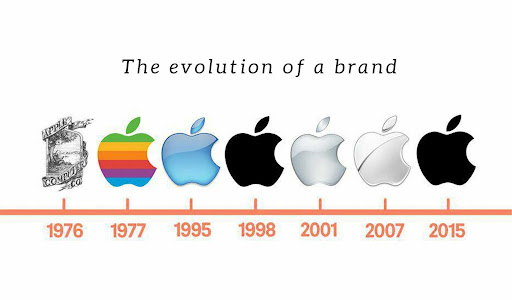
The key is leveraging COMPOSABILITY in storytelling. By using composable elements such as characters, themes and plot points, brands can create new stories that are easily digestible, relevant and adaptable to the community's changing needs while maintaining its core vision and values. For instance, Uniswap's brand story started with the promise of putting financial ownership back into the hands of the user using its decentralised exchange architecture. With moves into other web3 sectors, such as NFTs, the brand story is no longer just about the decentralised exchange of assets. It's about being at the forefront of the emerging decentralised state. The Ethereum ecosystem is another example on a broader scale. With an expansive mirage of subsectors and communities, the behemoth blockchain network still manages to bring them all under the umbrella of credible neutrality and decentralisation. You may argue that Ethereum is a decentralised system hence no intentional brand direction, but that lends credence to my point in treating a brand as a living organism with intelligence that evolves based on externalities.
In the traditional tech sector, the Apple brand story uses composable elements such as its design philosophy and aesthetic, an ecosystem of devices and services or commitment to privacy and security to weave and create new stories that communicate different areas of its brand principles. They do this without even deviating from their core messaging. Similarly, Robinhood's brand story uses composable elements such as commission-free trading, fractional shares, and cash management to create new stories that are relevant to current events and highlight new products and services. Composability in storytelling remains a powerful concept that can scale a brand's marketing with limitless possibilities.
How do you tell good stories?
We've been laying so much emphasis on storytelling in marketing all through his piece, but how exactly do you tell good stories??
This article is already long enough, so I'm going to give a quick template here;
Identify your audience
Who are you trying to reach, and what do they need? Nail your ICP and Persona. Get this right, and you've aced 70% of your task.
Tailor your narrative to fit
Your story should have a clear beginning, middle, and end—a clear story arc and a message that is easy to follow.
Use emotional triggers
Your audience will remember and engage if it makes them feel something. Imagery and language should resonate with your audience on a personal level.
Keep it simple and short (KISS)
Avoid using jargon or complex language. If it's complex, they lose interest.
Show, don't tell
Visual elements help a lot. Videos, images or graphics help bring your story to life. Look no further than how Elon Musk squashed the Twitter FUD in his Twitter 2.0 Deck. He displayed excellent communication skills and allowed the data to speak for itself.
Make it relatable
Real-life examples and anecdotes make your story relatable.
Add a call to action
Don't lose their attention. Tell them what to do next. Sign up for a newsletter, visit our website, or make a purchase—give them a clear next step to take, which must be tied to value.
Measure and Optimize
Track storytelling performance by measuring key metrics such as engagement, conversion and ROI. Use insights gained to optimise and improve.
Storytelling is about connecting with your audience on an emotional level. This template makes creating stories that resonate and achieve your marketing goals easy.
Don't just call to action. Call to value
Call to action (CTA) is a crucial element in marketing and sales. It's part of your message that gets your audience to engage, share their thoughts, join a community, purchase, sign up for a newsletter, or follow you on social media. But simply asking for a specific action isn't always enough to convince your audience to take that step. This is why you must CALL TO VALUE instead.

A call to value (CTV) is essentially a way of highlighting the benefits and importance that your product/service can offer to your audience. It's about showing your audience what's in it for them. CTV can be much more effective because it directly addresses the audience's needs and desires. You do this by focusing on the story behind your solution and how it perfectly aligns with your audience's needs. Amp it up by leveraging user testimonials and reviews. Never underestimate the power of your users' stories. CTV is about specificity. Rather than simply saying, "our product is great," get more specific about how what you do can benefit your audience. In web3, for example, highlight how easy it is to port from chain A to chain B using your bridging protocol, saving your audience time and making them more efficient in moving around their funds. Be authentic and genuine. Don't think your audience can't smell BS. Once there are holes in your story, they will bail. Eff around and find out. Remember that without trust, CTV won't work.
Call to action forces the audience to do what the company wants. Call to value highlights and nudges your audience to hop in and enjoy. But keep it simple, clear and concise. You don't want to overwhelm your audience with too much information or use overly complicated language. You need a straightforward story and one simple message to call to value.
A quick note on narrative engineering
Looking at the things that play out in the web3 ecosystem, I often ask myself, "are we creating narratives that empower and inspire, or are we perpetuating systems of inequality and exploitation?"
Any marketer who knows their onions knows that narrative engineering is at the core of any successful marketing endeavour. By crafting compelling narratives, you can shape perceptions and induce actions. In web3, there is a unique opportunity to craft inclusive narratives, empowering and inspiring. This is crucial because the inherent network effect in web3 is a double-edged sword. This has been apparent in projects like Terra, who've used it to destroy themselves, while others, such as Ethereum and Cosmos, continue to use it to clear their path to success. I think harnessing this network effect's power through narrative engineering is vital in capturing attention and driving adoption. It works on the ecosystem/blockchain and protocol/product levels. And brands can learn to take advantage of it. But this requires efforts beyond surface-level insights and understanding the deeper motivations of your audience. The questions brands need to answer are these; What are their wants, needs, and desires? What are their pain points, and how can we help to solve them?
And the answers can be found through; Market research and feedback gathering from the target audience—Surveys, focus groups, and social media listening. Data never fails. By gathering this information, brands can identify patterns and trends that can inform the creation of narratives that appeal to their target audience.
Tell that story again and again
Want to know the secret to create a story that sticks? Repeat it!
Repeatability in storytelling is such a powerful tool in branding that you wonder why most brands are sleeping on it. Think about the stories you love to tell, those you’ve heard from family and friends or have experienced yourself. Chances are you've said or listened to the same stories many times, and it never gets old. These stories become a part of who we are and shape our beliefs, values, and memories. Repeated storytelling is about creating a narrative that resonates with people and stays with them over time. Brands can use this power of storytelling to make a connection with their audiences that is deep, meaningful, and enduring. The iconic “Just Do It” slogan used by Nike has been repeated repeatedly in various forms and contexts. It has become synonymous with the brand. The simple yet powerful message of “Just Do It” speaks to Nike's core values of determination, perseverance, and the pursuit of greatness. The key here is to find the emotional core of your brand’s story and to consistently communicate it in a way that allows your audience to plug themselves in it and spin-off theirs based on their unique experiences. Repeated storytelling can increase your brand story's volume and create a symphony of awareness, loyalty, and emotional connection with your audience.
Are you looking to build your marketing strategy and grow your market share through brand storytelling? Reach out to me on LinkedIn or Twitter
Subscribe to my newsletter
Read articles from Victor Ugochukwu directly inside your inbox. Subscribe to the newsletter, and don't miss out.
Written by
